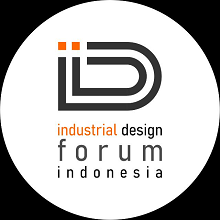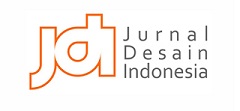PERANCANGAN USER INTERFACE EXPERIENCE (UIX) APLIKASI ANDROID SEBAGAI PENUNJANG SELF-DIRECTED LEARNING BAGI MAHASISWA
Abstract
Self-Directed Learning (SDL) is a student learning process in which students take responsibility for directing learning goals until these goals are met. The results of the questionnaire held by the researcher stated that there were several problems that students felt in the learning process with the SDL approach, including the absence of a facilitator to help students with learning difficulties; limited library references; a failure to identify the learning styles that stood out according to the student's personality; and the absence of a learning map that provides students with information. The goal of this research is to produce a prototype Android-based user interface experience (UIX) application that can aid student learning, which is classified as acceptable. Design thinking is used in this research to facilitate the development of UIX designs for future designs if necessary, namely empathize, define, ideate, prototype, and test. A UIX design test with system usability scale (SUS) metrics yields a score of 88.5, which is a grade A and acceptable for a prototype UIX design. In the test results, five participants completed several tasks and provided feedback for the proposed UIX design application, so that users can maximize their learning potential by using the Seltern Space application.
Keywords
Full Text:
PDF (Bahasa Indonesia)References
Adir, G., Adir, V., & Pascu, N. E. (2012). Logo Design and the Corporate Identity. Procedia - Social and Behavioral Sciences, 51, 650–654. https://doi.org/10.1016/j.sbspro.2012.08.218
Ajizah, I., & Munawir, M. (2021). Urgensi Teknologi Pendidikan: Analisis Kelebihan dan Kekurangan Teknologi Pendidikan di Era Revolusi Industri 4.0. Istighna: Jurnal Pendidikan Islam, 4(1), 25–36. https://doi.org/10.33853/istighna.v4i1.93
Akiike, A., & Ichikohji, T. (2021). What Are the Requirements for Design Thinking Articles? Annals of Business Administrative Science, 20(6), 197–209. https://doi.org/10.7880/abas.0210930a
Avishai, T., & Palatnik, A. (2022). How Teachers’ Knowledge and Didactic Contract Evolve When Transitioning to Student-Centered Pedagogy: The Case of Project-Based Learning. The Twelfth Congress of the European Society for Research in Mathematics Education. Retrieved from https://www.researchgate.net/publication/358891398
Babich, N. (2021). Design Thinking Process and Its Phases. Retrieved August 18, 2022, from https://xd.adobe.com/ideas/principles/design-systems/design-thinking-process/
Badan Pengembangan dan Pembinaan Bahasa. (2016). Kamus Besar Bahasa Indonesia. Retrieved August 16, 2022, from https://kbbi.kemdikbud.go.id/entri/aplikasi
Espinoza-Poves, J. L., Miranda-Vílchez, W. A., & Chafloque-Céspedes, R. (2019). The VARK Learning Styles among University Students of Business Schools. Journal of Educational Psychology, 7(2), 384–414. https://doi.org/10.20511/pyr2019.v7n2.254
Gibbons, M. (2002). The Self-Directed Learning Handbook: Challenging Adolescent Students to Excel. San Fransisco: Jossey-Bass.
Girdayanto, T. M., Andry, J. F., Limawal, I. I., Debby, F., & Jubiko. (2022). Analisis User Interface pada Website Bukalapak dengan Metode Heuristic. Jurnal Narada, 9(1), 37–52. https://doi.org/10.2241/narada.2022.v9.i1.003
Google. (2022). Crazy 8’s. Retrieved September 6, 2022, from https://designsprintkit.withgoogle.com/methodology/phase3-sketch/crazy-8s
Gregersen, M. K., & Johansen, T. S. (2018). Corporate Visual Identity: Exploring the Dogma of Consistency. Corporate Communications, 23(3), 342–356. https://doi.org/10.1108/CCIJ-10-2017-0088
Hermawati, L. I., & Andayani, E. (2020). Kompetensi Pedagogik Guru, Model Discovery Learning, dan Gaya Belajar Terhadap Kemandirian Belajar. Jurnal Penelitian Dan Pendidikan IPS (JPPI), 14(1), 22–30. https://doi.org/10.21067/jppi.v14i1.4761
Hinderks, A., Domínguez Mayo, F. J., Thomaschewski, J., & Escalona, M. J. (2022). Approaches to Manage the User Experience Process in Agile Software Development: A Systematic Literature Review. Information and Software Technology, 150, 106957. https://doi.org/10.1016/J.INFSOF.2022.106957
Huda, B., & Priyatna, B. (2019). Penggunaan Aplikasi Content Manajement System (CMS) Untuk Pengembangan Bisnis Berbasis E-Commerce. Systematics: Scientific Journal of Information System and Informatics, 1(2), 81–88. https://doi.org/10.35706/sys.v1i2.2076
ISO. (2019). ISO 9241-210: Ergonomics of Human-System Interaction – Part 210: Human-Centered Design for Interactive Systems. Geneva: International Organization for Standardization.
Kunjukunju, A., Ahmad, A., & Yusof, P. (2022). Self-Directed Learning Skills of Undergraduate Nursing Students. Enfermería Clínica, 32, S15–S19. https://doi.org/10.1016/J.ENFCLI.2022.03.010
Mastra, K. N. L., & Dharmawan, R. F. (2018). Tinjauan User Interface Design Pada Website E-Commerce Laku6. Jurnal Narada, 5(1), 93–108. Retrieved from https://www.laku6.com/
Morris, T. H., & Rohs, M. (2021). Digitization Bolstering Self-Directed Learning for Information Literate Adults–A Systematic Review. Computers and Education Open, 2, 1–11. https://doi.org/10.1016/j.caeo.2021.100048
Papilaya, J. O., & Huliselan, N. (2016). Identifikasi Gaya Belajar Mahasiswa. Jurnal Psikologi Undip, 15(1), 56–63. https://doi.org/10.14710/jpu.15.1.56-63
Rachmawati, D. O. (2010). Penerapan Model Self-Directed Learning untuk Meningkatkan Hasil Belajar dan Kemandirian Belajar Mahasiswa. Jurnal Pendidikan Dan Pengajaran, 43(3), 177–184. https://doi.org/10.23887/jppundiksha.v43i3.121
Saragih, S., Markus, T., Rhian, P., & Setiawan, S. (2021). Eksplorasi Kesiapan Dosen dan Mahasiswa Menjalani Pembelajaran Jarak Jauh di Masa Pandemi Covid-19. Kwangsan: Jurnal Teknologi Pendidikan, 9(1), 124–141. https://doi.org/10.31800/jtp.kw.v9n1.p124--141
Silen, C., & Uhlin, L. (2008). Self-Directed Learning-A Learning Issue for Students and Faculty! Teaching in Higher Education, 13(4), 461–475. https://doi.org/10.1080/13562510802169756
Simons, T., Gupta, A., & Buchanan, M. (2011). Innovation in R&D: Using Design Thinking to Develop New Models of Inventiveness, Productivity and Collaboration. Journal of Commercial Biotechnology, Vol. 17, pp. 301–307. https://doi.org/10.1057/jcb.2011.25
Soegaard, M. (2018a). The Basics of User Experience Design.
Soegaard, M. (2018b). The Basics of User Experience Design.
Stevens, E. (2020). What Is Design Thinking, and How Do We Apply It? Retrieved August 18, 2022, from https://www.invisionapp.com/inside-design/what-is-design-thinking/
Ulita, N. (2017). Kajian Visual Warna pada Kesenian Muturuk Mentawai. Jurnal Narada, 4(3), 259–273.
Will, T. (2017). Measuring and Interpreting System Usability Scale (SUS). Retrieved August 19, 2022, from https://uiuxtrend.com/measuring-system-usability-scale-sus/
DOI: http://dx.doi.org/10.22441/narada.2022.v9.i3.007
Refbacks
- There are currently no refbacks.
Fakultas Desain dan Seni Kreatif
Universitas Mercu Buana
Gedung E Lantai 4
Jl. Raya Meruya Selatan no.1, Kembangan, Jakarta 11650
Tlp./Fax: +62215871335
Journal International Standard Serial Number (ISSN) Registration:
The Journal is indexed by:
Tools for Citations & Plagiarism Detection:

Ciptaan disebarluaskan di bawah Lisensi Creative Commons Atribusi-NonKomersial 4.0 Internasional
 NARADA: Jurnal Desain dan Seni
NARADA: Jurnal Desain dan Seni

























